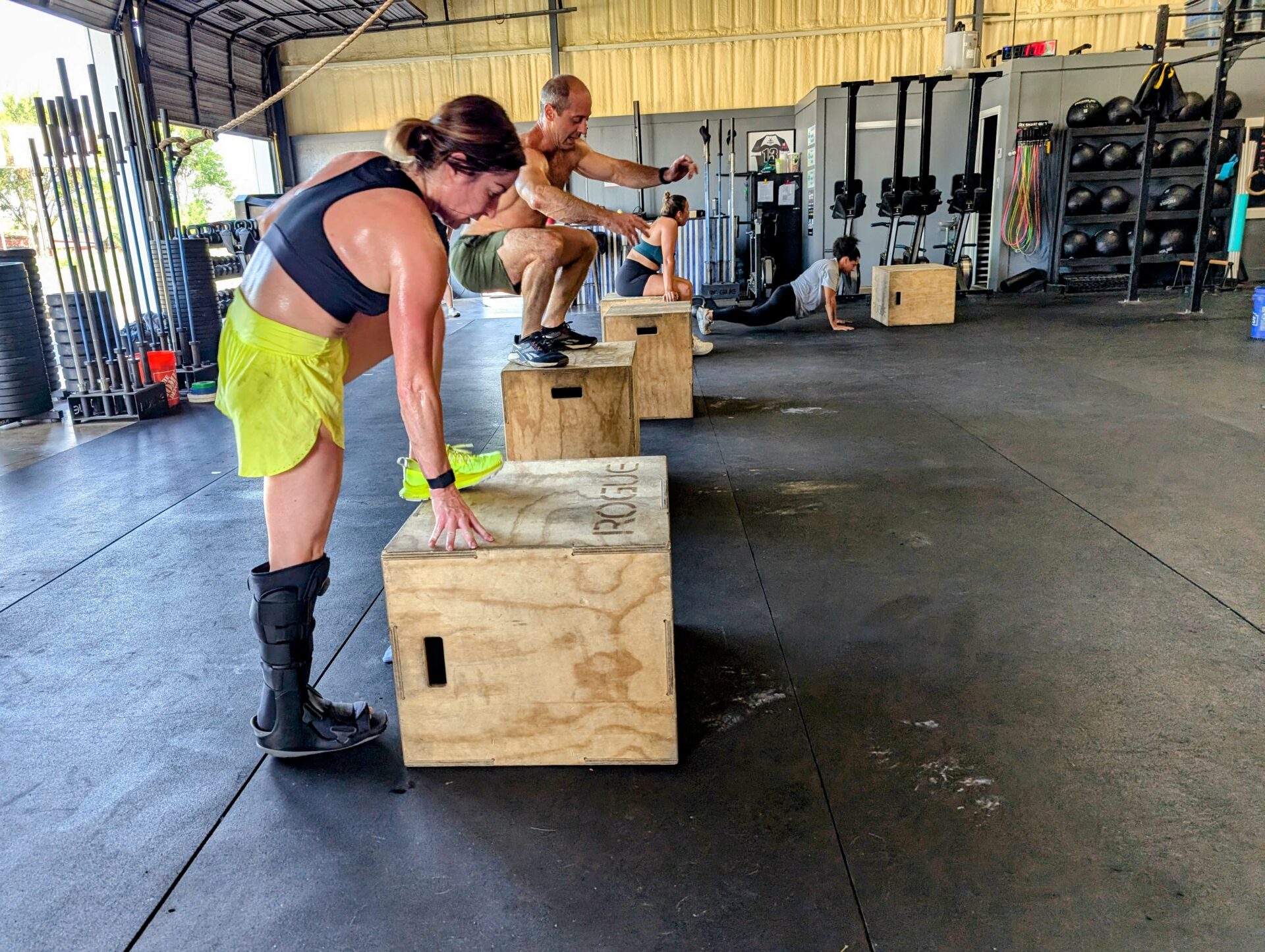First, some definition: hurt is mild to moderate discomfort or pain, temporary in nature (as opposed to chronic). This pain is usually alleviated by change in state or posture, rest (read: time), or even mental state:
“That position hurts my wrists.”
“The bottom of my squat is tight.”
“My shoulder don’t (want to) move like that.”
An injury wakes you up at night. Functional definition. Go see a PT. Please.
Rehabbing injury demands an experienced eye, creative mind, modifying movement, and scaling volume & intensity — all require frequent communication and collaboration with your coach. As it happens, this is what our coaches do for each person every workout: create adjustments that meet you where you are and push you towards fitness, recovery, or <insert goal here>.
If you can do strict pullups but your shoulder is injured, this requires workout modification. If you can’t do pullups, this also requires workout modification. Both modifications move toward the same end, the (re)acquisition of strict pullups.
Many times, injury can be utilized to the advantage of an athlete.

Upper body injuries would place more demand on lower body movements. Injuries that have us shy away from load intensities have us doing more cardio, skill work, and muscular endurance training.
If none of this is convincing enough to stay active with your training through injury, consider the GARD principle. This is CrossFit’s bread and butter. Where we might only use one limb to move weight, our brain solidifies those movement patterns throughout the body. Your one arm shoulder press will not drastically make that arm “better” than the other as the brain maps and shortcuts the movement pattern.
There are many examples of both at the gym. You need look no further than the leg braces attached to the burpees, the squats to a box, the press on snatch day, and even the easy bike in lieu of the 400m runs. The remarkable athletes are the ones who stick with it. The others… what’s their name again?





